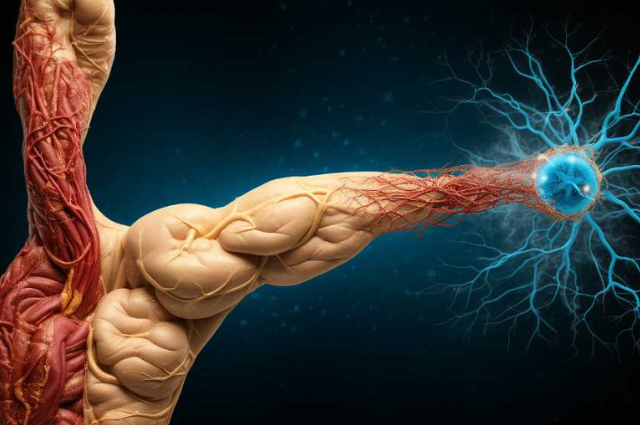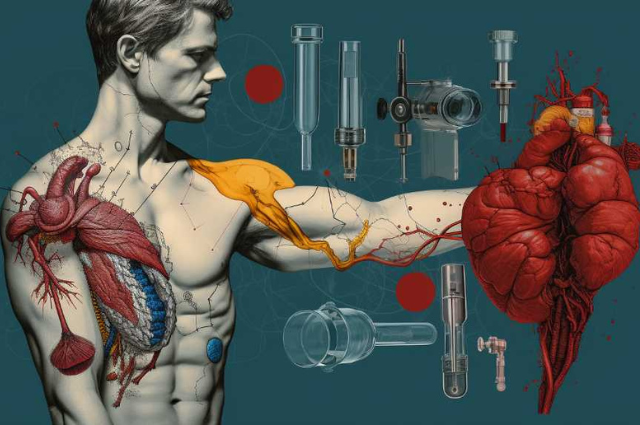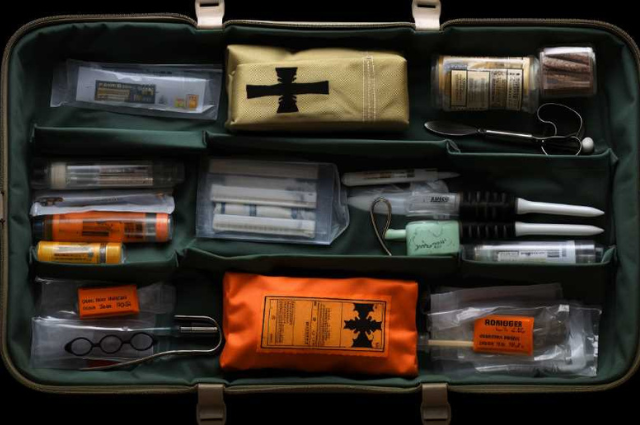Why Are Corticosteroids Different From Anabolic Steroids?
Corticosteroids and anabolic steroids, despite sharing the term 'steroids', have distinct characteristics and uses.
Corticosteroids, a class of drugs known for their anti-inflammatory effects, are often prescribed for conditions like asthma and arthritis.
Conversely, anabolic steroids, synthetic versions of the male hormone testosterone, are primarily used to promote muscle and bone growth.
It's essential to understand these differences due to their respective side effects and potential for misuse.
This text aims to elucidate the distinctive nature, uses, and effects of these two types of steroids.
Key Takeaways
- Corticosteroids are naturally produced in the adrenal cortex and are known for their anti-inflammatory effects.
- Corticosteroids suppress the immune system and reduce inflammation by binding to the cytoplasmic glucocorticoid receptor.
- Corticosteroids are used in managing autoimmune diseases, allergic reactions, asthma, and adrenal insufficiency conditions.
- Anabolic steroids, on the other hand, are synthetic derivatives of testosterone that enhance muscle growth and athletic performance. They have physical and psychological side effects and are misused in bodybuilding and competitive sports.
Understanding Steroids: Basic Concept
Steroids, classified as a group of biologically active organic compounds, play crucial roles in various bodily functions. They are composed of 17 carbon atoms arranged into four rings. These molecules are responsible for a multitude of physiological processes, including inflammation regulation, immune response, and the regulation of glucose, fat, and protein metabolism.
There are two main types of steroids: corticosteroids and anabolic steroids. Each variant displays unique chemical structures, modes of action, and physiological effects, which underscores the complex nature of steroid biochemistry.
Corticosteroids are naturally produced in the adrenal cortex, a part of the adrenal gland. They are instrumental in the body's response to stress and regulate inflammation. These steroids are often prescribed by physicians to treat conditions like asthma, rheumatoid arthritis, and lupus.
Anabolic steroids, on the other hand, mimic the effects of testosterone, a hormone produced in the testes and ovaries. These steroids promote the growth of skeletal muscle and enhance male sexual characteristics. Despite their potential adverse effects, anabolic steroids are often misused in sports and fitness for their muscle-building properties.
Understanding the underlying mechanisms of steroid action, their physiological roles, and the difference between corticosteroids and anabolic steroids is crucial. This knowledge not only provides a foundation for comprehending their therapeutic uses but also aids in identifying potential risks and side effects associated with steroid misuse. Therefore, a nuanced understanding of steroids is crucial for both scientific research and clinical practice.
Dissecting Corticosteroids: Mechanism and Uses
Delving deeper into the first of these two types, corticosteroids function primarily by suppressing the immune system and reducing inflammation, making them a valuable tool in managing a variety of medical conditions. These steroids are synthetically produced but closely resemble cortisol, a hormone naturally produced in the adrenal cortex, a part of adrenal glands.
Their principal mechanism of action revolves around binding to the cytoplasmic glucocorticoid receptor. This binding initiates a series of intracellular processes, resulting in the translocation of the receptor-steroid complex into the cell nucleus. Here, it binds to genomic DNA, influencing the transcription process of specific genes. This genomic effect results in anti-inflammatory and immunosuppressive actions. However, they also exhibit non-genomic effects, such as modifying cellular permeability and interfering with the function of cellular mediators.
Corticosteroids have diverse medical applications due to their potent anti-inflammatory and immunosuppressive properties. They are utilized in managing autoimmune diseases like lupus and rheumatoid arthritis, where the body's immune system mistakenly targets its cells. They are also used in treating allergic reactions and asthma, where inflammation plays a significant role. Additionally, corticosteroids are vital in managing adrenal insufficiency conditions, where the body fails to produce enough cortisol.
However, the broad, potent effects of corticosteroids can also lead to severe side effects if used inappropriately or for a prolonged duration. Therefore, their use necessitates a careful balance between therapeutic benefits and potential adverse effects, making their prescription a clinical judgment call.
The Various Types of Corticosteroids
Moving on to the various types of corticosteroids, it's important to note that they fall into two primary categories: glucocorticoids and mineralocorticoids. These classifications are based on the physiological effects they exert on the body, with glucocorticoids mainly influencing the metabolism and immune response, while mineralocorticoids regulate salt and water balance.
Glucocorticoids are more commonly known due to their numerous applications in treating inflammation, allergies, and autoimmune disorders. Some prevalent types include:
- Prednisone: A synthetic glucocorticoid used in treating various inflammatory and autoimmune conditions.
- Hydrocortisone: A corticosteroid that mirrors the activity of the naturally occurring hormone cortisol.
- Dexamethasone: A potent and long-acting glucocorticoid, often used to treat severe inflammation.
- Betamethasone: Used topically for skin inflammations and systemically for severe inflammatory conditions.
- Methylprednisolone: Predominantly used in the management of severe allergic reactions and autoimmune disorders.
Mineralocorticoids, on the other hand, are less well-known but play a crucial role in maintaining the body's electrolyte balance. The primary mineralocorticoid is Aldosterone, which maintains sodium and water levels to control blood volume and pressure.
Potential Side Effects of Corticosteroids
In the context of corticosteroid therapy, it is crucial to consider the potential side effects, which can range from mild to severe depending on the dosage and duration of treatment. Corticosteroids, despite their therapeutic efficacy, can pose significant health risks when used improperly or for extended periods.
In the short term, corticosteroids can elicit physiological changes such as increased appetite, weight gain, mood swings, and sleep disturbances. These effects can be attributed to the drug's influence on the hypothalamic-pituitary-adrenal axis, a complex set of interactions among endocrine glands that control reactions to stress and regulate various body processes.
Long-term corticosteroid use is more concerning, as it may lead to more serious side effects. Osteoporosis, characterized by the thinning of bone tissue and loss of bone density, is a prevalent adverse effect due to corticosteroids' impact on bone remodeling. They tend to inhibit calcium absorption and promote its excretion, weakening the skeletal system over time.
Another serious consequence is Cushing's syndrome, a condition characterized by excessive amounts of cortisol in the body. Symptoms can include a rounded face, upper body obesity, fragile and thin skin, and weakened muscles. Additionally, long-term corticosteroid use can impair immune response, making individuals more susceptible to infections.
Furthermore, abrupt discontinuation of corticosteroid therapy can lead to adrenal insufficiency, a condition where the adrenal glands do not produce sufficient steroid hormones. This can result in fatigue, body aches, low blood pressure, and lightheadedness.
Therefore, while corticosteroids can be an effective therapeutic tool, their use must be carefully regulated to minimize potential adverse effects. A nuanced understanding of these potential side effects is crucial for their safe and effective use.
Anabolic Steroids: Functions and Usage
Contrary to corticosteroids, anabolic steroids primarily serve the function of enhancing muscle growth and athletic performance. Derived synthetically from the male hormone testosterone, these substances increase the body's ability to produce more proteins in the muscle cells, thereby promoting faster muscle recovery and growth. This process, called anabolism, is the reason why they are commonly used in bodybuilding and competitive sports.
However, the usage of anabolic steroids goes beyond athletic enhancement. They are also employed in the medical field, fulfilling various therapeutic purposes. Here are some notable uses:
- Treatment of delayed puberty in boys.
- Management of certain types of anemia.
- Therapy for muscle wasting diseases like cancer or AIDS.
- Rehabilitation after severe burns or injuries.
- Counteracting the catabolic effect of long-term corticosteroid therapy.
Regardless of the purpose, the administration of anabolic steroids is a matter of careful dosage and monitoring. The potential for misuse is high due to their potent effects, and misuse often leads to adverse health consequences. Moreover, in competitive sports, the use of these substances is heavily regulated and often banned due to ethical considerations.
Digging Into Different Anabolic Steroids
Several distinct types of anabolic steroids exist, each with unique characteristics and effects that further extenuate their diverse applications in both athletic and medical contexts. These steroids can be broadly classified into exogenous and endogenous anabolic steroids.
Exogenous anabolic steroids are synthetically produced and include substances like Methandienone and Trenbolone. Methandienone, commonly known as Dianabol, is often used by bodybuilders for its rapid muscle-building effects. It enhances protein synthesis and glycogenolysis, leading to increased muscle mass and strength. However, its misuse can lead to adverse effects like liver damage and cardiovascular issues. Trenbolone, on the other hand, is a veterinary grade steroid often misused by athletes for its ability to promote lean muscle growth and quick recovery.
Endogenous anabolic steroids are naturally occurring in the body and include hormones like testosterone and dihydrotestosterone. Testosterone, the primary male sex hormone, plays a crucial role in muscle growth, bone density, and body hair. It is often administered medically to treat conditions like hypogonadism. Dihydrotestosterone, a metabolite of testosterone, has potent androgenic effects but is less effective in muscle and bone growth.
The pharmacodynamics of these steroids are complex and multi-faceted, encompassing a wide range of biochemical and physiological processes. Understanding these mechanisms and their implications is critical, given the increasing misuse of anabolic steroids in sports and the subsequent health risks. Moreover, it underscores the need for continued research and development in the field of steroid pharmacology.
Adverse Effects of Anabolic Steroids
Anabolic steroids' misuse can lead to a plethora of adverse health effects, ranging from mild to potentially life-threatening conditions. These artificial substances mimic the effects of testosterone in the body, promoting muscle growth and enhancing athletic performance. However, the misuse of these drugs can wreak havoc on the body's natural hormonal balance and lead to a myriad of health complications.
The adverse effects of anabolic steroids can be broadly categorized into physical and psychological side effects. They manifest differently in individuals depending upon various factors such as dosage, duration of use, individual's health status, and genetic predisposition.
Some of the most common adverse effects include:
- Altered lipid profiles, leading to increased risk of heart disease and stroke
- Liver damage or cancer due to prolonged use
- Severe acne and oily skin
- Premature balding or hair loss
- Development of breast tissue in men and deepening of voice in women due to hormonal imbalance
Furthermore, the psychological effects of anabolic steroids misuse include mood swings, aggression, paranoia, and depression. These effects can be severe and long-lasting, impacting an individual's overall quality of life.
The misuse of anabolic steroids is a serious health concern that calls for public awareness and education. Users must understand the gravity of the potential risks associated with their misuse. Medical professionals should be vigilant in identifying misuse and providing necessary support and treatment.
Comparing Corticosteroids and Anabolic Steroids
In the realm of pharmacology, it's essential to understand that corticosteroids and anabolic steroids, despite sharing the 'steroids' nomenclature, have markedly different structures, functions, and effects on the human body. The primary distinction lies in their core chemical structure and the receptors they interact with in the body, leading to a diverse range of physiological responses.
Corticosteroids, synthesized naturally in the adrenal cortex, are biochemically categorized as glucocorticoids and mineralocorticoids. They play crucial roles in the body's response to stress, immune system regulation, inflammation reduction, and maintenance of blood electrolyte levels. Medically, corticosteroids are often prescribed for conditions like asthma, allergies, rheumatoid arthritis, and lupus. They exert their effects by binding to glucocorticoid receptors, influencing gene transcription, and subsequently altering protein synthesis.
Conversely, anabolic steroids, or anabolic-androgenic steroids (AAS), are synthetic derivatives of testosterone. They promote protein synthesis and muscle growth, with their primary medical use being to treat conditions like delayed puberty and muscle wasting diseases. These steroids bind to androgen receptors, stimulating the production of proteins that contribute to muscle growth.
The side effects of these two groups also differ significantly. Prolonged use of corticosteroids can lead to Cushing's syndrome, osteoporosis, and immunosuppression. On the other hand, misuse of anabolic steroids can result in cardiovascular disorders, liver damage, and psychiatric abnormalities.
Frequently Asked Questions
What Is the Legal Status of Corticosteroids and Anabolic Steroids in the United States?
In the United States, both corticosteroids and anabolic steroids have different legal statuses.
Corticosteroids are legal and widely prescribed for their anti-inflammatory properties in treating conditions like asthma or arthritis.
Anabolic steroids, on the other hand, are controlled substances. While they have medicinal uses, they are often misused for performance enhancement, leading to their strict regulation.
Possession without a valid prescription can lead to legal penalties.
Can Corticosteroids and Anabolic Steroids Be Used in Combination for Any Treatment?
Corticosteroids and anabolic steroids, despite sharing the steroid nomenclature, have distinct therapeutic uses due to their varied physiological effects. Co-administration is generally not practiced in clinical settings.
Corticosteroids are typically employed for their anti-inflammatory and immunosuppressive properties. They are commonly used to treat conditions such as asthma, allergies, and autoimmune diseases. These drugs work by reducing inflammation and suppressing the immune response, which helps alleviate symptoms and manage chronic conditions.
On the other hand, anabolic steroids are used to stimulate muscle and bone growth. They are often prescribed to individuals with muscle-wasting diseases or those recovering from severe injuries. These drugs mimic the effects of testosterone in the body, promoting protein synthesis and increasing muscle mass.
It is important to note that uncontrolled combination of corticosteroids and anabolic steroids could lead to adverse effects and contradict their individual therapeutic objectives. Therefore, healthcare professionals carefully consider the specific needs of each patient before prescribing these medications.
How Does Long-Term Usage of These Steroids Affect the Immune System?
Long-term usage of corticosteroids and anabolic steroids can suppress the immune system. Corticosteroids, often used to reduce inflammation, can inhibit immune responses by reducing the activity of the immune system.
Anabolic steroids, typically used to stimulate muscle growth, can also suppress immune function over extended use.
It's crucial to monitor and manage such usage under a healthcare professional's supervision to avoid potential adverse effects on immunity.
Are There Any Natural Alternatives to Corticosteroids and Anabolic Steroids?
Natural alternatives to corticosteroids and anabolic steroids do exist. These include dietary supplements like Omega-3 fatty acids, magnesium, and vitamin C which have anti-inflammatory properties.
For muscle development, protein-rich foods and creatine supplements can be effective. However, it's important to note that the efficacy and safety of these alternatives can vary, and they may not provide the same level of results or speed of effect as synthetic steroids.
Always consult a healthcare provider before starting any new supplement.
How Do Corticosteroids and Anabolic Steroids Interact With Other Medications?
Corticosteroids and anabolic steroids can interact with various other medications, potentially altering their effects.
Corticosteroids, for instance, can increase the risk of ulcers if taken with nonsteroidal anti-inflammatory drugs.
Anabolic steroids may intensify the effects of anticoagulants, increasing bleeding risks.
These interactions highlight the necessity for careful management and coordination with healthcare professionals when combining these types of medications.
Conclusion
In conclusion, corticosteroids and anabolic steroids, despite sharing the term 'steroids', differ significantly in their functions, uses, and potential side effects.
Corticosteroids are primarily used for their anti-inflammatory properties. They help reduce inflammation in the body and are commonly prescribed for conditions such as asthma, allergies, and autoimmune disorders. These steroids work by suppressing the immune system and reducing the production of inflammatory substances.
On the other hand, anabolic steroids are utilized for their muscle-building capabilities. They are synthetic versions of the male hormone testosterone and are often abused by athletes and bodybuilders to enhance performance and increase muscle mass. Anabolic steroids work by promoting protein synthesis, which leads to muscle growth and improved athletic performance.
The potential side effects of corticosteroids include weight gain, increased appetite, mood swings, and weakened bones. Prolonged use of these steroids can also lead to adrenal insufficiency and increased susceptibility to infections.
In contrast, anabolic steroids can cause a range of side effects, including liver damage, cardiovascular problems, hormonal imbalances, and psychiatric disorders. They can also lead to dependency and addiction.
The distinct characteristics and roles of these two categories of steroids in medical and athletic fields are further highlighted by their different functions, uses, and potential side effects. It is important to use these medications responsibly and under medical supervision to minimize the risks associated with their use.








